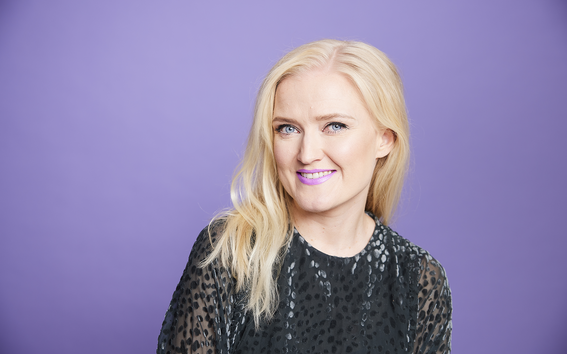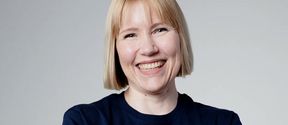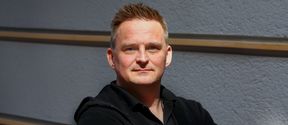Upright: Enhancing the understanding of the true impact that companies have on the world
Annu Nieminen talks about Upright's mission and what motivated her personally to start the company.

Hi Annu, could you give us a short explanation of what Upright does and what is your mission?
Sure! At Upright, we quantify the net impact of companies and facilitate smarter decision-making for investors, companies and governments with our machine learning enabled model. Our goal is to enhance the understanding of the true impact that companies have on the world around us.
Today, almost every company claims to be impactful and on a mission to save the planet. However, at Upright, we believe science-based understanding is needed to discern companies’ true actions and impact. As the nerds who dive into vast amounts of information, we bring data and facts to the sustainability discourse, sometimes confronting inconvenient truths that may disrupt the prevalent "everybody can be green" narrative.
Upright was founded six years ago, in 2017. We currently have a team of 40 people and we’re located in Helsinki, although some of our team members work remotely from other parts of the world.
That sounds like a crucial and ambitious mission. Can you share what motivated you personally to start Upright and embark on this journey?
My motivation for starting Upright stems from my passion for bringing quantitative rigour to issues that have been traditionally considered vague or values-based. From a young age, I found myself fired up by arguments claiming that certain things couldn’t be measured. This curiosity led me to delve into the realm of how companies and organisations utilise their resources and what constitutes smart resource usage for the betterment of humanity.
Even during my high school years and throughout my studies at Aalto University, I couldn’t help but be concerned about the excessive production of things that failed to deliver the meaningful value they promised. As I delved deeper into understanding the impact of companies, I explored various existing models. My experience working at McKinsey taught me about financial valuations of companies, but I couldn’t find the answer I sought regarding the genuine impact that companies have on the world. I realised that I had to take matters into my own hands and create the impact measuring model I had envisioned.
Have you faced any challenges in encouraging companies to track their net impact?
In the early days of Upright, the world was a different place, and we did encounter some concerns. Many executives I met were unsure whether impact measuring would become a widely relevant aspect of their operations. However, times have changed significantly since then.
Today, we no longer need to incentivize companies to track their net impact as they are intrinsically motivated due to various business reasons. Especially the largest companies in the world have come to realise that measuring net impact is now an issue of “do or die.”
Witnessing this tremendous shift in general mindsets has been one of the most positive surprises in our journey so far.
That’s definitely great to hear! Now, can you explain in simple terms how your quantification model works and what sets it apart from other impact measuring models?
Certainly! Our quantification model is based on a top-down approach, which distinguishes it from traditional bottom-up models like life cycle assessments. Bottom-up models are effective for calculating some impact aspects of specific products, for instance, the CO2 emissions of a ceramic tea cup. By tracing back its origin, from production to materials, one can calculate the carbon footprint of the cup, for example.
However, for larger entities like big corporations or large pension funds, understanding the impact throughout their entire value chain requires a top-down approach instead. At Upright, we take a global view and begin with, for example, data on greenhouse gas emissions for the whole global private sector. From there, we allocate these emissions first to specific products and services throughout the value chain and then to specific companies based on their product and service portfolio.
Finally, we repeat this process for each relevant impact category – environment, the health of people, society, and knowledge creation. This top-down approach ensures that our results are comparable across all industries and companies. And we don’t just look at the negative impacts of companies but also the positive ones, which allows people to consider what companies are actually getting done with the resources they use.
Sounds very impressive! Can you share some insights into Upright’s journey so far, and have you faced any growing pains along the way?
As the discourse around sustainability has rapidly evolved, I find myself both pleased with the progress and impatient for the big picture changes. It has been incredibly encouraging to witness a growing understanding of the difference between superficial sustainability metrics and science-based impact measuring.
One crucial aspect of our journey has been making impact data accessible to all. Previously, there has been mainly ESG data around that has remained inaccessible to most people and difficult to comprehend. At Upright, we strive to provide impact data to everyone, free of charge. This hopefully empowers students, researchers and other stakeholders to access the information and contribute to the collective understanding of net impact.
Of course, like any startup, we have dealt with our fair share of growing pains. For me as a founder, one of the most significant challenges was being daring enough to pursue this ambitious mission and maintaining confidence to keep pushing forward.
You studied Information Networks at Aalto University School of Science. How have your studies and time at Aalto influenced your path as a founder and led to where you are now?
My studies in Information Networks at Aalto University have had a profound impact on my journey as a founder and even on the principles guiding Upright’s operations. Back when I started my studies, the Information Networks program was known for being somewhat untraditional and multidisciplinary, offering not only math courses but also opportunities to explore fields like communications, aesthetics, sociology, and philosophy.
This multidisciplinary approach left a lasting impression on me and shaped how I approach complex problem-solving. Combining high-level mathematics to areas where math hasn’t traditionally been used has become a cornerstone of how we operate at Upright. We apply advanced mathematical solutions to behavioural change and decision-making, resulting in a holistic understanding of net impact.
One more question before you go, Annu: what advice would you give to someone aspiring to start their own impact-driven business?
Remember that running an impact-driven business is just like running any other business. Everything that really matters is making the business succeed because if your business doesn’t succeed, you have no impact.
It’s important to focus on the fundamentals, really iterate your business model, and carefully assess whether your business idea is something that can really fly. Impact-driven businesses are evaluated just like any other business, and sometimes with even higher scrutiny. Some people might doubt the feasibility of running a successful business while maintaining a net positive impact. Therefore, it’s essential to strike a balance between impact and sound business fundamentals. Don’t try to cash in on the impact aspect of your business too much because if your business’ impact is the only flesh you have on the bones, that might just backfire.
Read also Annu Nieminen's career story here: https://shakinguptech.aalto.fi/en/career-stories/annu-nieminen-the-upright-project
Show other posts from this blog

Sonja from Kapacity.io: "Having true desire to make a meaningful impact through your business idea is crucial"
To succeed, you need to be persistent and critical of your own thinking, and keep on trying and searching until you come up with something not a lot of people have thought of before.
Johanna from Relex: "Find a problem that is relevant and above all, meaningful to you"
RELEX Solutions helps retailers optimize their supply chain by enhancing adaptability and efficiency across the consumer goods value chain.
Peter from Vensum: "It’s crucial to have a clear vision of the impact you aim to make. "
Vensum’s story was ignited by the urgent need to address some of the main problems our energy system will face in the near future.